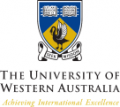potato spindle
Phylogeny, pathogenicity and epidemiology of potato spindle tuber viroid (PSTVd) and related pospiviroids in Australia - Final Report
| Publication Type | Report | |
| Year of Publication | 2012 | |
| Authors | Barbetti, M.; Mackie, A.; Rodoni, B.; Jones, R.; McKirdy, S. | |
| Pages | 13 |
Potato growing areas of Australia are currently considered free of Potato Spindle Tuber Viroid (PSTVd) and this pathogen is classified as an emergency plant pest (Category 3) under the Emergency Plant Pest Response Deed (EPPRD). There were six emergency responses for PSTVd in Western Australia (WA) and New South Wales (NSW) in the six years preceding commencement of this project and the concern was that without any pathway control there would continue to be periodic detections of PSTVd in the future. The importation of tomato seed, which until June 2008 was unregulated, had been implicated as the likely source of PSTVd. However, research at that time from Europe identified alternative hosts of PSTVd as potentially the source of inoculum for PSTVd infected tomatoes. Moreover, research then in WA indicated that both solanaceous and non-solanaceous species might be hosts.
Research outcomes:
This project has determined the extent of Potato spindle tuber viroid (PSTVd) infection in solanaceous and non-solanaceous weeds in Carnarvon, Western Australia; defined the genetic relationships between the strains of PSTVd that occur in Carnarvon and those found elsewhere in Australia; demonstrated how this pathogen is able to survive and spread on contaminated surfaces; revealed the pathogenicity of local PSTVd on potato and tomato plants; and provided key information to allow instigation of appropriate quarantine, disinfection and management protocols to prevent its further importation into and spread within Australia.
Research implications:
The horticultural industries in Australia now have been provided with a clearer understanding of the origins of the PSTVd outbreaks in Australia over recent years. Further, they have been provided with a better understanding of the dynamics of PSTVd epidemics in the field, the sources of infection, how contact transmission occurs, and how survival and infectivity is affected by different material surfaces. Measures that need to be taken at a national, state and industry level to minimise future spread the pathogen within Australia are now better defined (e.g. protocols to ensue seed is free of PSTVd contamination). The findings of this project have significantly advanced Australia’s capacity to safeguard its potato, tomato and other solanaceous plant-based industries. Ongoing work to highlight possible measures for disinfestation of contaminated materials will further enhance Australia’s border security while also helping to secure the future of valuable horticultural exports from Australia.
Acknowledgements:
Horticulture Australia Limited for matching funding, DAFWA for paying half salaries for Martin Barbetti and Roger Jones during this project.
PROJECT DETAILS
Complete
Institution
University of Western Australia
Term
July 2009 - June 2012
Budget
$387,000




